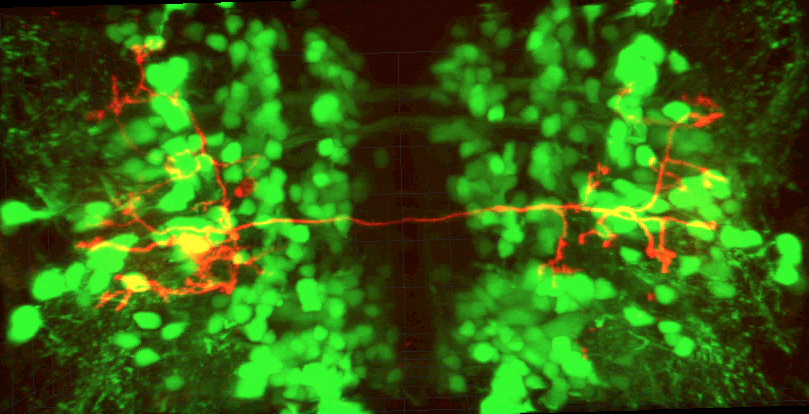Brains evolved to solve many of the same problems in species as diverse as worms, flies, fish, and humans. Using collections of neurons, from fewer than 100 in small invertebrates to hundreds of millions in humans, animals behave in ways that allow survival and reproduction in demanding and often hostile environments. Revealing the principles of brain function thus lies at the heart of understanding the biological world, as well as ourselves. The implications are both fundamental and practical—we must first understand how brains function normally before we can attempt to fix or understand broken or damaged brains.
A major technical hurdle to revealing the principles that brains use in order to produce behavior is the ability to monitor structure and function with single cell and subcellular resolution throughout the nervous system—a necessity because behavior emerges from broad interactions of neurons across brains, even in the simplest organisms.
With support from a NSF NeuroNex grant, a team of investigators will push optical microscopy to this goal through the development of a Laboratory for Innovative Neurotechnology at Cornell (LINC). Experts from physics, engineering and biology will work together to develop a suite of optical imaging tools that will overcome current barriers in the depth, breath and speed of imaging to enable the structure and activity of neurons throughout living brains of intact animals across a range of species to be mapped during the execution of complex behaviors, and then disseminate this technology to the broader neuroscience community.
NeuroNex Investigators
Prof. Chris Xu (Principal Investigator)
Prof. Joe Fetcho (Co-Principal Investigator)
Prof. Mert Sabuncu (Co-Principal Investigator)
Prof. Chris Schaffer (Co-Principal Investigator)
Prof. Nilay Yapici (Co-Principal Investigator)

